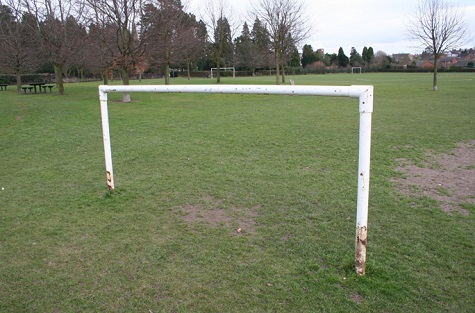As an ex sportsman and sports coach, I have been saying for many years that the future health of our nation has been on a steady decline - which ironically began in the early 1970s when the government promoted a non-competitive sports campaign in state schools. This dramatically reduced the curricular time for sport to less than four hours a week, resulting in a dramatic loss of competitive sport activities in schools.
This historic blow is coupled with the fact that many state schools have also greatly reduced their grounds maintenance budgets to such an extent that the quality of playing surfaces has declined, not appearing attractive or indeed safe for sports participation.

Having said that, there are of course some schools who still do value their grounds and keep them in a relative good condition, doing what they can to promote physical activities. But in the main, I believe there has definitely been a national decline of sports participation in state schools.
I read with interest a recent report on pupil inactivity in a copy of the Sports Management Magazine where it stated that the World Health Organisation (WHO) has warned that the majority of adolescents worldwide are not sufficiently physically active, putting their current and future health at risk.
The article stated that a WHO-led study, published in The Lancet Child & Adolescent Health journal, suggests that "urgent action" is needed to increase physical activity levels in girls and boys aged 11 to 17 years.
The study revealed that more than 80 per cent of school-going adolescents globally do not meet current recommendations of at least one hour of physical activity per day – including 85 per cent of girls and 78 per cent of boys.
Of the 146 countries studied for the report, girls were less active than boys in all but four (Tonga, Samoa, Afghanistan and Zambia).
“Urgent policy action to increase physical activity is needed now, particularly to promote and retain girls’ participation in physical activity,” the study author Dr Regina Guthold is quoted in the piece.
To improve levels of physical activity among adolescents, WHO says that "urgent scaling up" is needed of known effective policies and programmes to increase physical activity in adolescents.
Without doubt the current state of the health of many of our youngsters is not encouraging. We do see a lot more overweight children which is no doubt caused by several factors - with the main two drivers being poor diet and lack of exercise.

We need to see a dramatic change in heart from the government and schools to bring back an appropriate sports / activity curriculum and dedicated PE / health coordinators in schools.
There is a great opportunity to start this programme in junior schools when school children can be introduced to a wide range of activities, making best use of the school grounds.
Most, if not all, schools have potentially fantastic grounds that need investment to provide the playing surfaces and topography to enhance physical activities.
We should take a leaf out of the private school sector, where many of these schools provide up to ten hours or more of sport per week - and they are prepared to invest heavily in their grounds and sporting facilities.

Thanks to the national Lottery, we have seen a dramatic investment in new sports facilities over many years, however our key issue is finding monies for ongoing maintenance. I firmly believe a percentage of any large capital lottery grants should be put into five or ten year maintenance plans of any such new facilities.
What’s the point of funding a large drainage scheme or a new pitch if we do not allow a percentage of this capitol money to fund an essential maintenance period? Part of the initial bid should set out how the club or school will be funding the maintenance of this new facility in the coming years.
Last year, I wrote a blog that spoke about this obesity crisis, saying that we (that is to say everyone who works in the sports turf industry and amenity landscape sectors) play an important role in providing essential facilities for people to participate in sport and physical activities. That in turn helps us provide opportunities for people to keep themselves fit and healthy - both mentally and physically.
I wish the government could see the many benefits our industry can offer if it directed more money to schools, parks and open spaces to help solve this growing obesity problem. Why wait and put the cost on the NHS? Prevention is better than cure.
As for next week’s blog, it will be centred on my attendance at this week’s BTME show in Harrogate. Look forward to seeing you there!